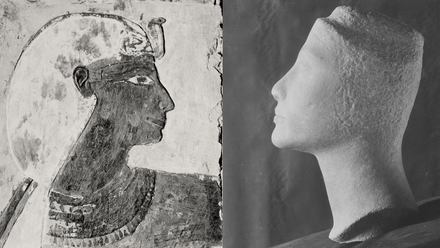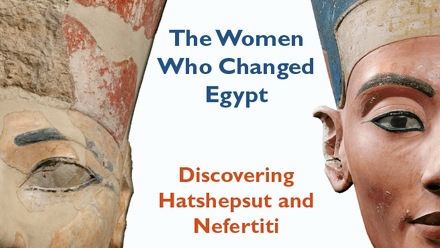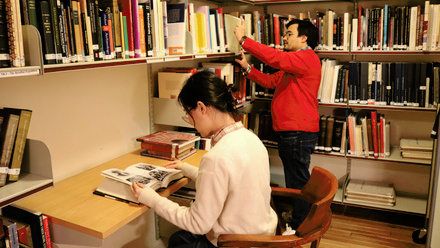The Reconstructed History of an Unusual Stela
By Caitlin Jensen
While there are thousands of Egyptian stelae in museums around the world, each stela has its own tale of discovery and distribution. The stela of Heqaib (HqA-ib in Egyptian), an ‘overseer of the storehouse’ during the Twelfth Dynasty, is quite unusual in its design. Although it is a standard slab stela (81.3 by 56 cm) in form, it is also made of two separate pieces of stone. The majority of this stela is made of a rectangular limestone slab with torus molding and a cavetto cornice (only a trace of which remains in the upper left corner). The hieroglyphic text inscribed upon is a standard offering formula. What is interesting is the group statue of two Heqaibs, his father Nesumentu, and his mother Wabut, which was carved in quartzite (according to the British Museum) or a ‘softer stone’ (according to the excavator) and was set into the upper half of the limestone stela, effectively combining the functions of a stela and a statue. There is a discrepancy between the excavator’s and the British Museum’s stone identification, since quartzite is actually a harder stone than limestone. After a visual inspection of the stela, it appears that the inset statues were carved from quartzite, rather than the ‘softer stone’.
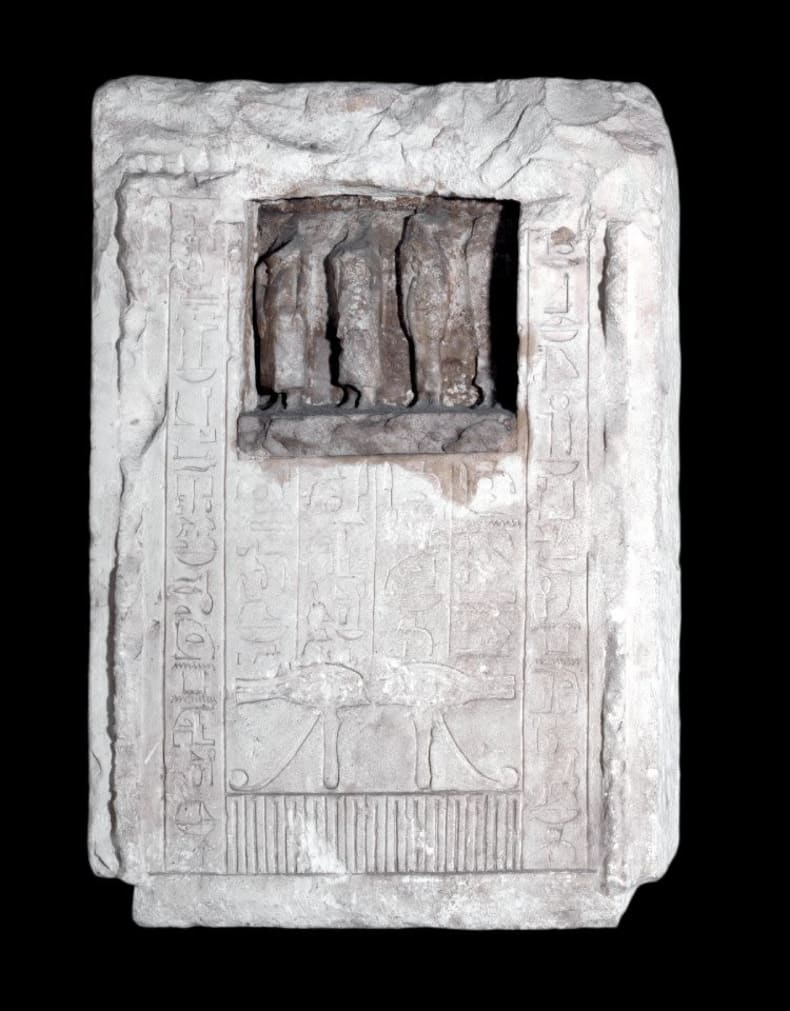
Photograph of British Museum EA1638 (© Trustees of the British Museum)
Heqaib’s stela now resides behind glass in the Egyptian Hall (G4/B19), or ‘sculpture gallery’, in the British Museum. However, using archives, we can trace its post-excavation history, from its discovery to the present day.
T. E. Peet, who excavated the stela on behalf of the EES, tells us little about the exact findspot of Heqaib’s stela, only that it was found on the surface of Cemetery S at Abydos, but not associated with any particular tomb. Cemetery S is found on the northern side of the wadi that acts as a natural split in the Abydos landscape. Mastabas and shaft tombs of the Twelfth Dynasty are scattered throughout Cemetery S, so we cannot suggest the original intended position of this stela. It is also unclear whether the stela was found in situ, or whether it was found in the disturbed soil of the early excavations and illegal digging that took place in the nineteenth century CE.
Digging through the archives, we find the original glass-plate negative of the piece (AB.NEG.12.380), which was taken during the 1911-12 excavation season shortly after it was found. Comparing the current condition of the stela to this original negative shows very little change in the stela’s condition over the past 100 years.
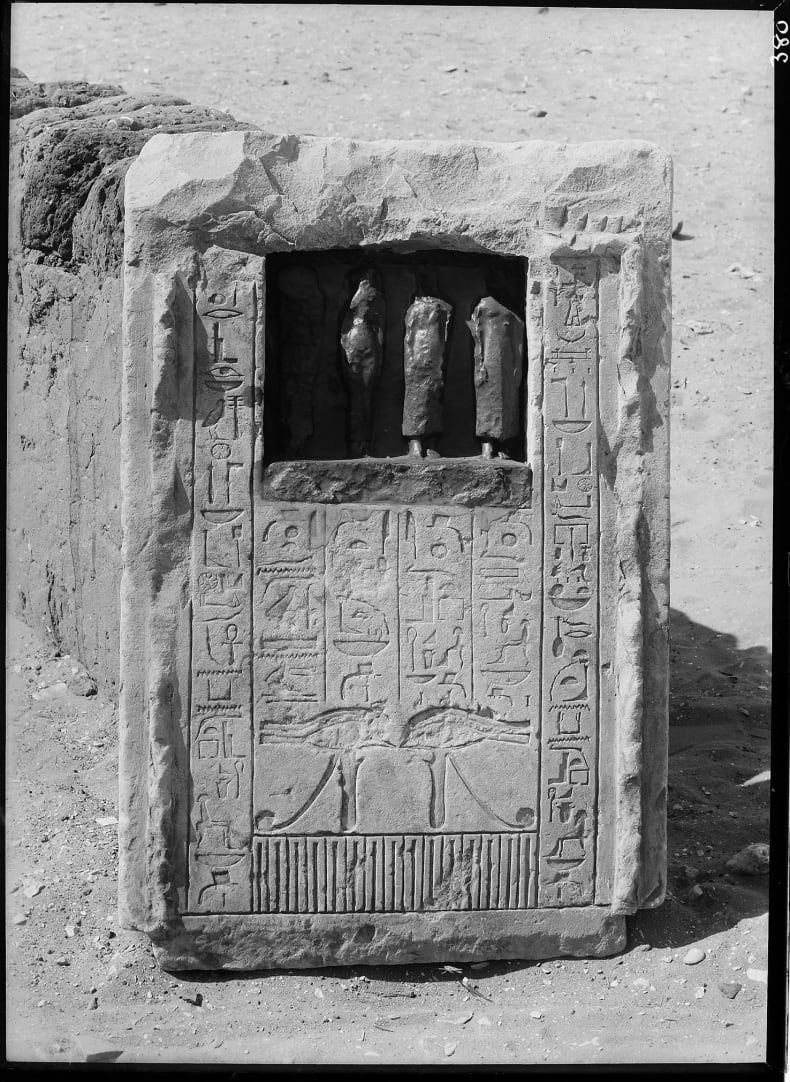
Photograph of the stela of Heqaib at Abydos in 1912 (Glass plate negative AB.NEG.12.380)
The EES distributed the stela to the British Museum in 1913 along with various other objects, and it is mentioned in a distribution list held in the EES Lucy Gura Archive (DIST.34.25a). Strangely, the stela, and the excavation season in general, were not recorded in the official EES Distribution Register for 1900-1914. According to the British Museum registration number (1913.1011.46), the stela was the 46th object accessioned on the 11th of October, 1913. The stela was then given the sequential number EA1638, which is how the stela is referred to today.
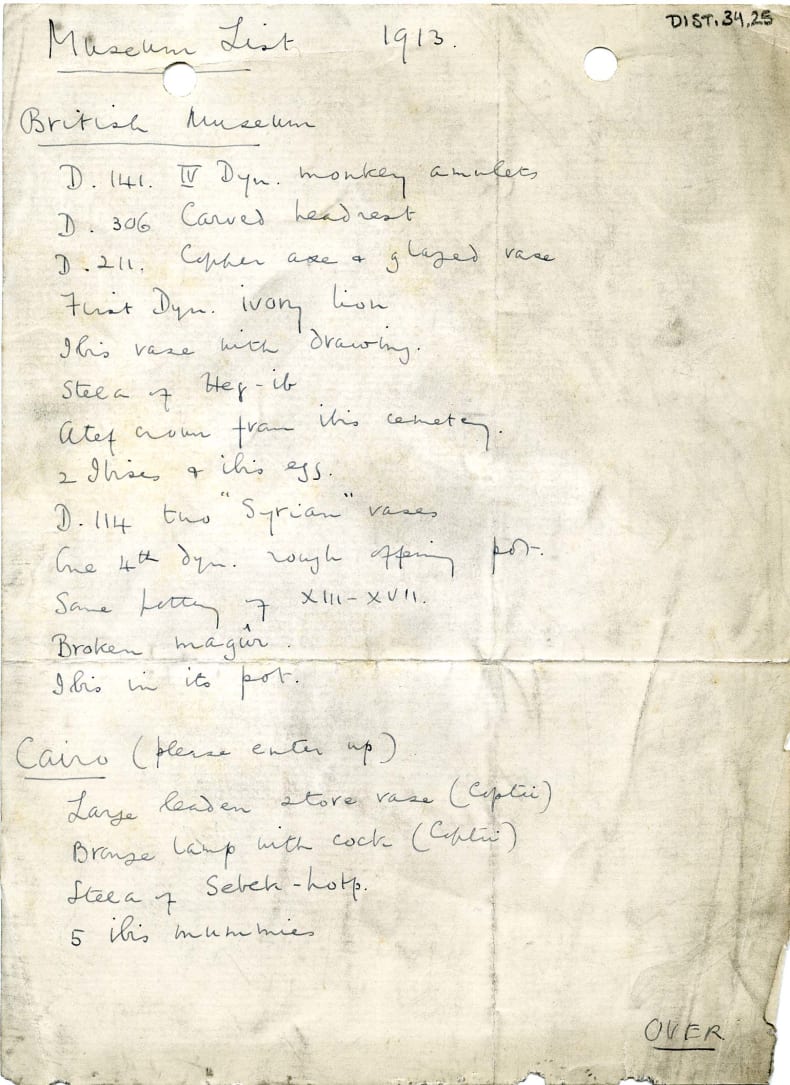
EES distribution list from 1913 (DIST.34.25a) that mentions a ‘Stela of Heq-ib’
The negative was later published by Peet in his 1914 excavation report for the EES (Peet, The Cemeteries of Abydos Part II, pl. XXIII, 2). Instead of its museum number, the report lists this stela as ‘no.27’. Peet’s publication then made a mistake on the distribution list included at the back of the report, as it says that ‘stelae nos. 2, 25 and 26’ were sent to the British Museum, and that a ‘stela of Sebk-o (No. 26)’ was sent to Cornell University. Apparently, the stela no. 26 listed for the British Museum is a typo, and should be no.27, the stela of Heqaib.
Reconstructing the post-excavation history of an object, such as the stela of Heqaib, can only happen when there is a good ‘paper trail’ that has been recorded and preserved through archival work.
Further Reading and Resources
Artefacts of Excavation, Abydos 1912-1913
The British Museum online catalogue, EA1638
Budge, E. A. W. 1922. Hieroglyphic Texts from Egyptian Stela &c. in the British Museum. Part VI. London: The British Museum.
Peet, T. E. 1914. The Cemeteries of Abydos. Part II.-1911-1912. London: The Egypt Exploration Fund.

